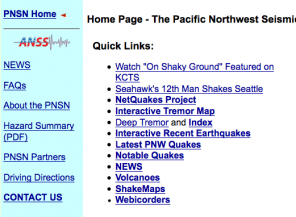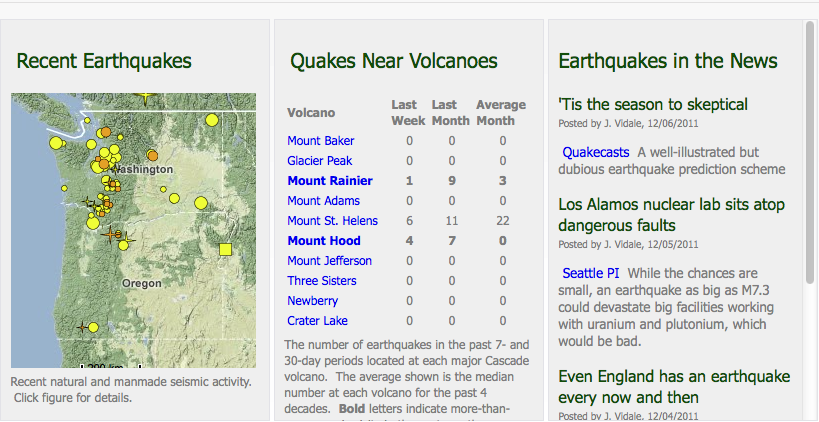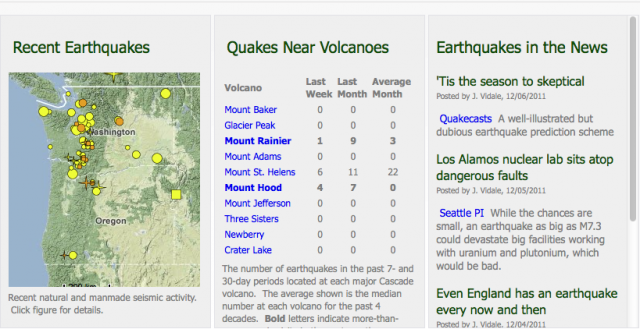Quake bugs (and the people who love them)! This one’s for you. The Pacific Northwest Seismic Network, long a treasure trove of real-time and archived data about seismic activity in the Northwest, has finally gotten around to designing their website, and bringing their terrific visualizations to the surface.
 Before, the home page looked pretty much like this –>
Before, the home page looked pretty much like this –>
Until you clicked on the boring hyperlinks, you had no idea that there were such fun and interactive maps and visualizations underneath there.
Plus, AQUA!
Now you get that great snapshot of recent quakes (don’t worry, we get a lot of small quakes), plus a Volcano Watch section, which tells you at a glance which of our area’s ten volcanoes is about to snuff out life as we know it. Ha ha! No, we have fun. And in fact, after a busy November, with nine earthquakes in its vicinity, Mount Rainier seems to be relaxing a bit. Mount Hood, on the other hand, had four last week.
Good luck, Oregonians. We’ll see you on the other side.
On the blog, you can read about under-the-hood changes regarding the software that generates the views you see, and, closer to home, about the Interlaken readings that would seem to show that Sound Transit tunneling is noisy work. CHS reported on the construction-related shaking back in mid-November; Montlake residents had been feeling the vibrations since the beginning of September. Sound Transit thinks it’s due to the trains traveling the tunnel-in-progress:
Based on what we learned in the Shelby-Hamlin neighborhood, we believe the source of the complaints is Ground Borne Noise (GBN). GBN is caused by vibration traveling through the earth and interacting with the structure of a building, creating an audible noise. In the Shelby-Hamlin neighborhood, we know the GBN is caused by the supply trains delivering materials to the Tunnel Boring Machines (TBM), and we suspect the same is true in the Boyer neighborhood.
Judging from the triggered seismographic events, they still have some work to do on quieting things down, down there.

